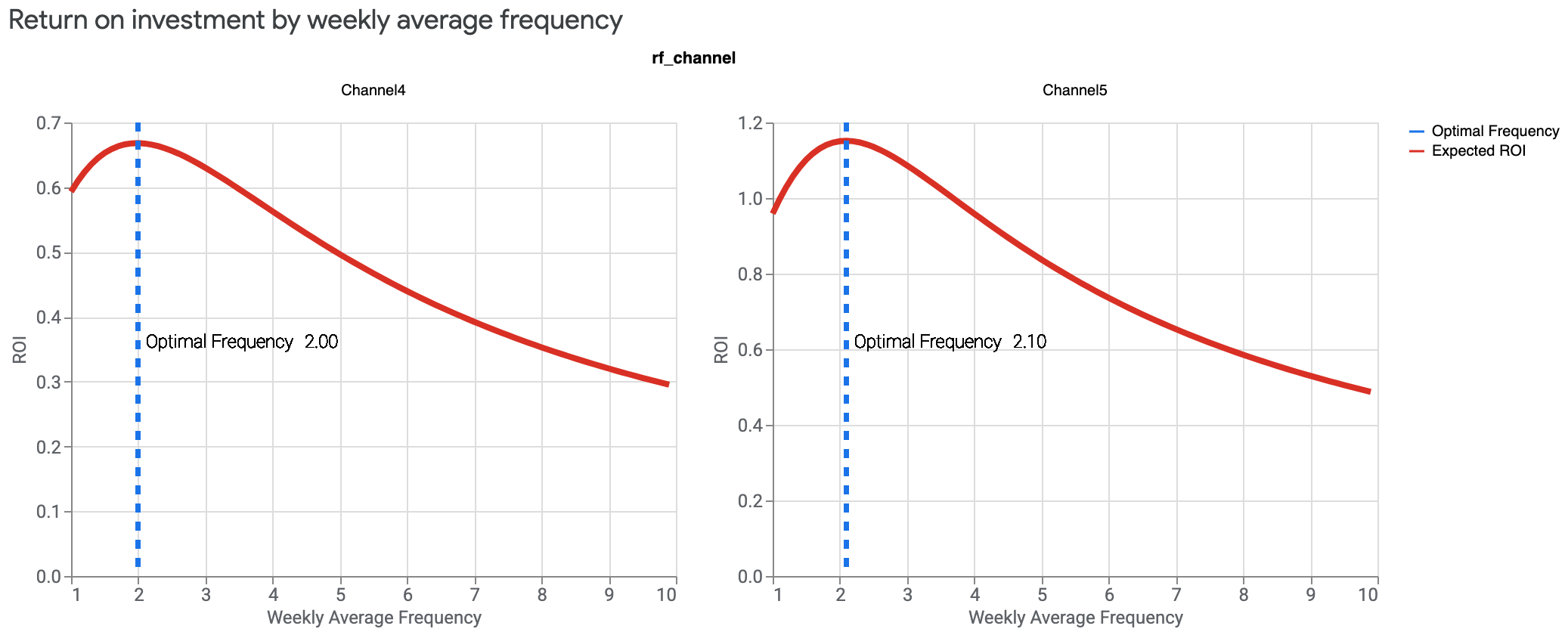One of the main uses of reach and frequency in MMM is to find the optimal frequency for a channel in a specified time period. Optimal frequency refers to the ideal average number of times an advertisement should be shown to the target audience for each geo and the time needed to achieve the maximum ROI. Because it is impracticable for advertisers to execute different frequencies for each geo and time, Meridian imposes a restriction that the same average frequency is applied in all geos and times.
The optimal frequency is calculated numerically: the expected ROI for each frequency level is estimated first, and then the optimal frequency is the frequency that maximizes the expected ROI. Note that optimal frequency is only available for those channels that utilize both reach and frequency as inputs as described in Load geo-level data with reach and frequency.
Run the following commands to optimize frequency on a channel:
reach_and_frequency = visualizer_module.ReachAndFrequency(meridian)
reach_and_frequency.plot_optimal_frequency()
Example output:

Meridian also provides the option to perform budget optimization based on either the optimal frequency or the historical frequency for each channel. For more information, see Optimization for media channels with reach and frequency data. By default, the optimal frequency is used for budget optimization. Optimal frequency is recommended.
To use the historical frequency for budget optimization, change the use_optimal_frequency setting to False:
budget_optimizer = optimizer.BudgetOptimizer(meridian)
optimization_results = budget_optimizer.optimize(use_optimal_frequency=False)
Where use_optimal_frequency is a boolean indicating whether the optimal
frequency or the historical frequency is used for budget optimization.
Default: True, meaning the optimal frequency is used.
